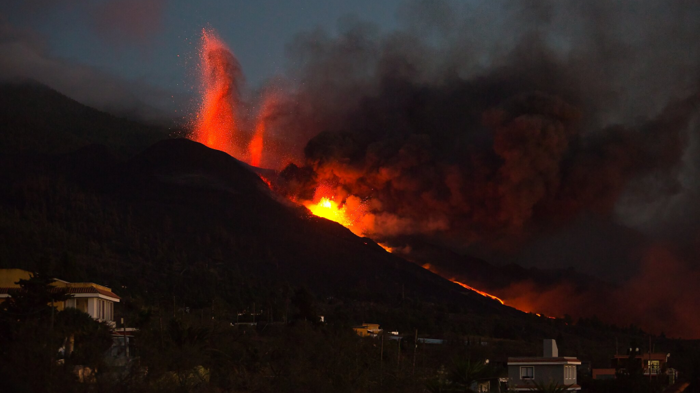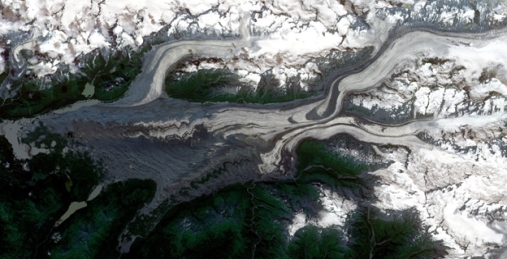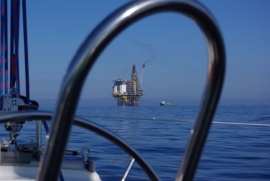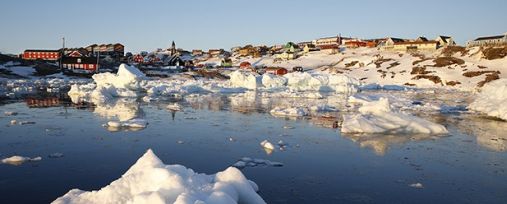How dangerous is it, how long will it last, and what happens if you go near liquid lava? Here, UiO researcher and volcano expert Olivier Galland writes about everything you need to know about the volcanic eruption on La Palma on the Spanish Canary Islands.
From the archive
It's not about the Black Death or the dinosaurs dying out. "The Great Dying" is an event in the geological perspective. The largest of all mass extinctions on Earth. We are at the end of the Permian Period, 252 million years ago.
– We need to understand how glaciers are shrinking in order to better adapt to climate change impacts such as changes to water supply, landslides and avalanches, says Prof. Andreas Kääb, a glacier expert from the University of Oslo in Norway.
A new methodology to combine heaps of satellite images allows researchers from University of Oslo with colleagues to create a complete time series of glacier movement. To demonstrate the methodology, they created a map of ice flow every month, over several years, covering several mountain ranges in Southern Alaska and Canada. Once created, the dataset revealed several sudden glacier speed-ups and slow-downs.
The permafrost in the Arctic is thawing. Now a new study find that seventy percent of the current infrastructure in the Arctic in the next 30 years has a high potential to be affected by thawing permafrost. This despite if the climate change targets of the Paris Agreement is meet.
Volcanic activity primarily focuses at plate boundaries on Earth. But volcanoes can also form far away from plate boundaries due to plumes of hot material rising from the Earth’s deep interior. Eventually this material reaches the surface and breaks through the Earth’s crust to form a volcano – a so-called “hotspot”. Scientists now present a theory of how this type of hotspot activity can explain massive, past volcanic eruptions in Greenland and in the North Atlantic.
Indonesia, May 2006 - Several mud eruptions started in the North East of Java Island. Villages were burried and people were forced to flee. The most active eruption called Lusi is still active and scientist now link this to a nearby volcanic system.
The Hawaiian-Emperor volcanic island chain in the NW Pacific Ocean is well known for its peculiar 60° bend. This bend has been heavily debated for decades. Researchers from University of Oslo, GFZ Potsdam, and Utrecht University now definitely demonstrate that to form the observed bend requires an abrupt change in the motion of the Pacific tectonic plate, while southward drift of the mantle plume that has sourced the chain since ~80 Ma is required to explain its entire 2000 km length.
Across the globe, sea level has been rising for decades, but we don’t know how fast. Researchers have now analyzed tide gauge data and reconstructed global mean sea level since 1902. Their record yields a slower average rise before 1990 than previously thought, but similar high rates of about 3.1 mm/yr as observed from independent satellite observations from 1993-2012. This suggests that global mean sea level has been accelerating much faster than previously assumed in the past two decades.
What has Einstein and Newton got to do with the motion of the solar system bodies?
A warming Arctic will give an extended growing season particularly due to an earlier spring, and it has been believed that this will give a greater uptake of CO2 in plants and an increased carbon sink. An impact potentially offsetting some of the anthropogenic increases in greenhouse gases. A new study suggest that the “warmer spring, bigger sink” hypothesis may no longer hold.
“Scream”, Edvard Munch’s most iconic painting, shows a blood-red sky over the Oslo fjord. “Suddenly the sky became red as blood” - Munch describes this event as scaring. Was it pollution particles from a volcano eruption which caused this red sky? Three Norwegian meteorologists offer an alternative hypothesis: it could have been mother-of-pearl clouds Munch saw and painted in 1892.
Mauritius is best known as a tropical holiday paradise island in the Indian Ocean, but for an Earth Science research team led by Professor Trond H. Torsvik it is piece of a geological puzzle. Now they have found a new fragment of an ancient continental crust beneath the young, but inactive volcanoes on the island.
Cross disciplinary approaches using both seismic recordings and satellite observations of glaciers provide data to estimate glacier frontal ablation rates. This provides new insight into the processes that control dynamic mass loss of glaciers into the sea. Such cross disciplinary approaches can be valuable in climate research.
For 56 mill years ago the climate on Earth changed rapidly and the temperature increased at least 5 degrees. Scientists are now closer to understand the climate change, called PETM, and why it lasted over 150 000 years. The answer might be eruptions of methane gas from craters offshore Norway.
Recently, a Danish-Norwegian research team re-processed thousands of aerial photos into 3D Digital Elevation Models (DEM) surrounding the entire coastline of Greenland. The new data extends the precise geometric record of Greenland glacier margins to the late 1970s and 80s and can be used to quantify the decline in the ice mass, for example. The data is freely available to the public domain.
International team of climate researchers reconstructs global cooling in the reign of the Roman emperor Justinian. Ice-cores and data about sulfate flux at Greenland and Artica reveils the pasts climate disasters. Their research presented at EGU 2016; Vienna recently.
Many glaciers on Svalbard behave very differently from other glaciers worldwide. They advance massively for some years and then quickly retreat – and then remain quiescent for fifty to a hundred years – before they once again start to advance.
A decrease in permafrost (cryotic soil) will follow climate change and a rise in temperature. This could have serious consequences. We might see an increase in greenhouse gasses, a greater possibility of landslides and live under the threat of monster waves.
In August, Professor Emeritus Knut Bjørlykke at the Department of Geosciences finally got the result after a lot of work; A 2nd edition and expanded textbook in Petroleum Geoscience (2015). The book spans over a wide range of petroleum geology, from geophysics to sedimentary depositional environment to environmental geology. Several collegues contributed with articles in the book, which will be translated into Chinese.
At the beginning of June, Ilulissat, Greenland, played host to the international Climate Days. The final conference of the Nordic Centre of Excellence SVALI was part of the programme.
The Department of Geosciences has been ranked high for two subject areas in the QS World University Rankings for 2015. The research environment in geography, hydrology and geomatics (picture) advanced to 50th place, and the research environment for geology ranked between 51 and 100 in this international evaluation based on different criteria such as citations and academic reputation.
After over 35 years the Chinese Chang’E-3 mission is the first to visit and land on the lunar surface. CEED, University of Oslo postdoctoral researcher Zhiyong Xiao participates in the mission team, which has just published their first results in Science this week that reveals a vivid geological picture of the landing site on the moon.
A large international study - Global Land Ice Measurements from Space (GLIMS) shows that Earth’s glaciers are shrinking with only a few exceptions. The scientists behind the study have applied satellite images to study the glaciers over the recent decades. The comprehensive report is now published as a book and an e-book.
Researchers from the project SEISMOGLAC, Department of Geosciences had good luck when they captured on film the calving of Kronebreen, one of Svalbard's fastest glaciers. They added the soundtrack of the seismic recordings. Seismic Sounds of Calving published on YouTube has now 1200 views.
























